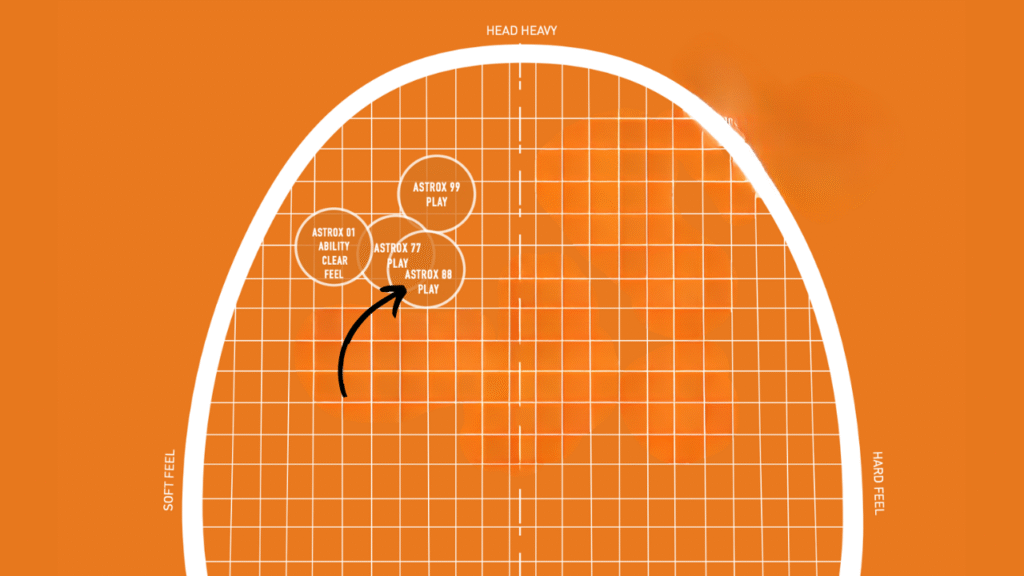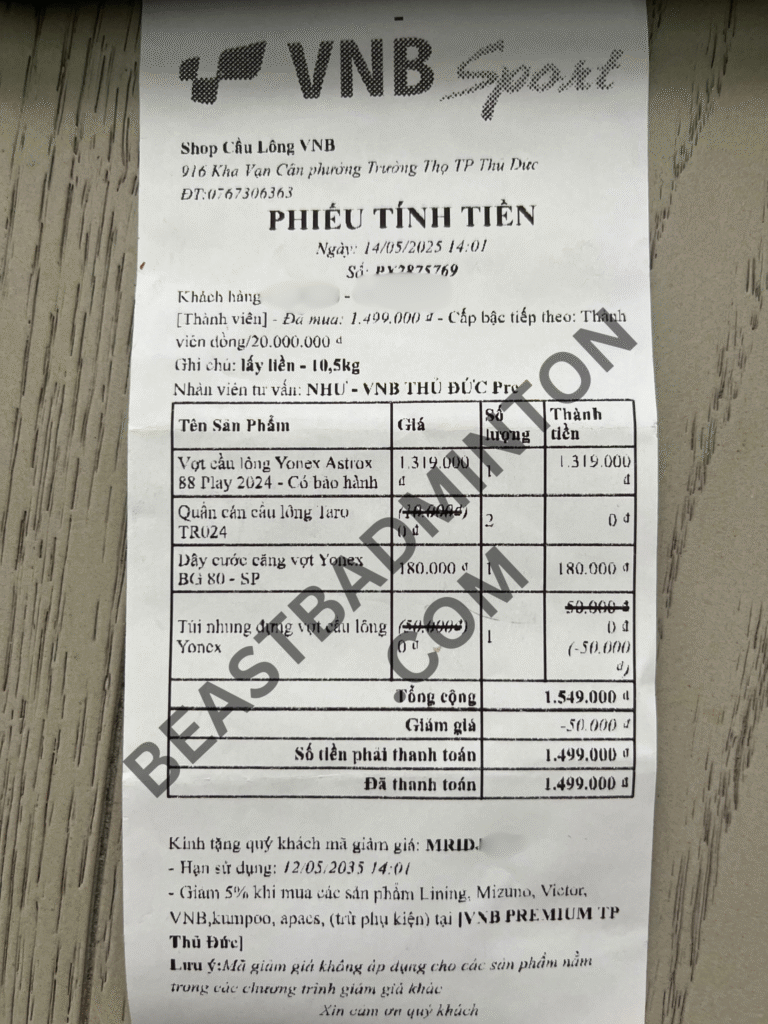This is the beginner racket in the Astrox 88 3rd gen series, released in 2024 (not to be confused with the popular Astrox 88 2nd gen series from a few years prior).
This series is marketed as the rackets for doubles pairs: the 88S for the front court, and the 88D for the rearcourt. Each comes in intermediate and advanced models (the Game, Tour, and Pro). Only the beginner option is merged into one Astrox 88 Play.
The 88D Game, the intermediate rearcourt racket, has been among my favorite rackets for a while due to its balance between power and speed.
This Astrox 88 Play 3rd gen feels a lot like the 88D Game for intermediate players, but with a touch more power and flexibility (this level of flex feels more suitable for beginners since you don’t need as clean technique on your shots to hit the sweet spot).

For this Astrox 88 Play review, I’ve had the racket on court for ten hours, mostly playing doubles games. I bought it with my own money to give you an unbiased review, and I had it restrung with my preferred string, the Yonex BG80 at 10.5kg in tension.

Table of Contents
Yonex Astrox 88 Play review
Power
The 99 is too power-focused for my preference since it creates challenges on soft shots at the front court for players with limited skills like me.
On powerful shots, I don’t notice much difference when comparing with the Astrox 88 Play: I still hit it out of the court too easily if I’m not careful (to be fair my ‘power’-string doesn’t help with this).
I’ve especially found stick smashes to work out well as they require less clean prep work than a full power smash and are quicker to execute in doubles games. The power the 88 Play offers helps make those stick smashes more powerful and deadly.
But I like the power the most on lifts and defensive blocks where bad execution and not enough power usually is the issue and will mess up the rally.
On lifts, I feel the extra power, which makes it easier to get the shuttle that bit further back, so the next (attacking) shot becomes that bit easier. Since beginner players tend to lift a lot, this will be handy.
I might be biased as I prefer defense over offense, and blocking smashes is one of my favorite things about the game. Power rackets have this special ability to block smashes without needing to add pace to the shuttle while blocking, and you can focus more on directing the shuttle to cause trouble for your opponents.
The trade-off is that the racket moves slower, so I’ve had to react a split second quicker to get the racket on the shuttle cleanly and on the sweet spot.
The extra head weight that helps generate the power also means you’ll need to be fairly strong in your shoulders to not get tired after a few games if you’re smashing a lot (this wasn’t an issue for me during games where I didn’t play a lot of powerful overhead shots).
With a powerful racket like this one, there’s no need to dive into clear shots as they are a breeze.
If you’re like me and not that good at generating power without a big swing, the Astrox 88 Play’s power is useful to help add that extra bit of power. Because my stroke skills aren’t amazing, I found that avoiding full power shots to be more effective with this racket since I lose a fair bit of control.
Soft shots (midcourt + defense + net game)
If we compare it to my current favorite (doubles) badminton racket for beginners, the Arcsaber 11 Play, this is where things get tricky.
The Yonex Astrox 88 Play requires more finesse and control on tight shots near the net, and it’s SOOOO easy to use that bit too much power and offer your opponent an easy kill.
The same goes for shots where you’re stuck in the midcourt, unbalanced, but still manage to send the shuttle back over the net to your opponent’s midcourt. Due to the help with power, it’s easy to give it a bit too much power, so it doesn’t challenge your opponent at the net, but not so much that it’s out of reach until it hits the rearcourt.
The perfect spot for an easy kill at the midcourt.
For doubles, I prefer the Arcsaber 11 Play because it feels faster and more controlled in any area I can think of — but the downside is less power.
For example, I’ve found it easier to get the racket on the shuttle during the fast drive duels that typically happen in doubles, where you don’t have much time to swing or even think about what to do.
A split second will make the difference between causing a fault while technically hitting the shuttle or having it land cleanly on the stringbed and send a deadly shot back over the net. All other things being equal, the faster racket (Arcsaber 11 Play) gets on the shuttle cleaner in these situations, assuming your skills are the same.
The Verdict
Hey reader, a quick interruption...
I’m experimenting partnering with webshops that sell badminton gear, like Amazon. I’ll include links to buy the gear I review and if you do, they’ll pay me a small commission. That doesn’t change your price and you’ll get more play-tested gear as a result but I thought it was fair to let you know.
As an Amazon Associate, I earn from qualifying purchases.
I appreciate your support,
Aske
